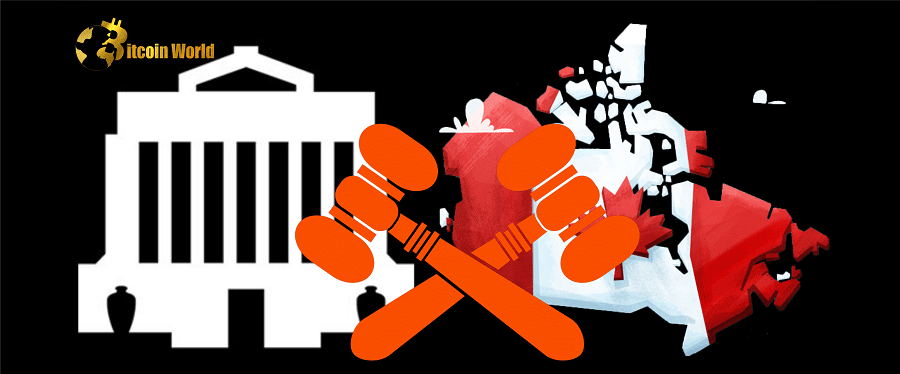Are stablecoins the key to unlocking a more efficient and competitive digital economy, or a ticking time bomb for financial instability? The Bank of Canada has weighed in, and their latest analytic note suggests that regulation is the crucial ingredient to ensure these fiat-referenced crypto assets deliver on their promise without derailing the financial system. Let’s dive into why Canada’s central bank is emphasizing the need for a robust regulatory framework for stablecoins.
What are Fiat-Referenced Crypto Assets (Stablecoins) Anyway?
You’ve probably heard the buzz around cryptocurrencies, but stablecoins are a slightly different breed. Imagine a crypto asset designed to maintain a stable value by being pegged to a fiat currency like the US dollar or the Canadian dollar. That’s essentially what a fiat-referenced crypto asset, or stablecoin, is.
The Bank of Canada’s recent note shines a spotlight on these digital currencies, exploring their mechanics, potential upsides, and the risks they bring to the table. According to their research, the stablecoin market has exploded, growing 30-fold between early 2020 and mid-2022, reaching a staggering $161 billion globally. Initially used mainly on crypto trading platforms, their potential extends far beyond, especially when combined with the power of smart contracts.
The Allure of Stablecoins: Benefits on the Horizon
Why all the excitement around stablecoins? The Bank of Canada highlights some compelling potential benefits:
- Efficiency and Competition in Payments: Stablecoins could streamline payment processes, making them faster and potentially cheaper, especially in our increasingly digital world. Think about quicker cross-border transactions or more efficient online payments.
- Innovation in Financial Services: Combined with smart contracts, stablecoins could pave the way for new and innovative financial products and services, potentially disrupting traditional finance and offering more options to consumers.
- Digital Economy Boost: By facilitating easier and more efficient digital transactions, stablecoins could fuel the growth of the digital economy, making online commerce and digital interactions smoother.
However, the Bank of Canada isn’t just focused on the rosy picture. They also emphasize a crucial caveat: “without safeguards, they could pose significant risks to the stability of the financial system.”
The Flip Side: Risks Lurking Beneath the Surface
So, what are these potential risks that have the Bank of Canada concerned? The note zeroes in on concentration risk as a major point of concern. This risk manifests in two key ways:
- Market Dominance by a Few Stablecoins: Currently, the top three stablecoins control a whopping 90% of the entire fiat-referenced crypto asset market. This concentration means that any instability or failure within these dominant stablecoins could have a ripple effect across the entire crypto ecosystem and potentially beyond.
- Concentrated Ownership: Similarly, ownership of stablecoins is also highly concentrated. The top 1% of investors hold 90% or more of the total supply of major stablecoins. This creates a scenario where the actions or vulnerabilities of a small group of large holders could significantly impact the market.
This concentration risk is a significant worry because it means that problems with a few key players could have an outsized impact, potentially destabilizing the broader economy. Imagine if a major stablecoin issuer faced a crisis of confidence – the consequences could be widespread.
Canada’s Regulatory Landscape: Not Quite Fit for Purpose?
The Bank of Canada’s note points out that while international bodies are setting standards for stablecoin regulation, current regulatory frameworks, both in Canada and globally, are often “not currently fit for purpose.”
They acknowledge the existing frameworks and interim measures but stress the urgency for a more comprehensive approach. According to the report, “A timely and comprehensive regulatory approach in Canada will ensure that fiat-referenced cryptoassets can deliver potential benefits without posing unnecessary risks.”
The Canadian Crypto Bill: A Missed Opportunity?
Interestingly, this note comes at a time when cryptocurrency regulation in Canada is somewhat in flux. Earlier this year, Bill C-249, known as the “Encouraging the Growth of the Cryptoasset Sector Act,” was introduced in the Canadian House of Commons. This bill aimed to foster the crypto industry’s growth and garnered significant support from the Canadian crypto community.
However, despite initial enthusiasm, the bill became politically contentious and ultimately stalled after its second reading. This effectively means that Canada missed an opportunity to proactively shape its crypto regulatory landscape, at least for now.
Looking Ahead: What’s Next for Stablecoin Regulation in Canada?
The Bank of Canada’s analytic note serves as a clear call to action. It highlights the potential benefits of stablecoins while underscoring the critical need for robust regulation to mitigate the inherent risks. With the global stablecoin market continuing to grow and evolve, the pressure is on for countries like Canada to develop and implement effective regulatory frameworks.
Key Takeaways from the Bank of Canada’s Stance:
- Regulation is Essential: The Bank of Canada believes regulation is not just necessary but crucial for stablecoins to safely realize their potential benefits.
- Focus on Comprehensive Frameworks: Existing regulatory approaches are inadequate, and Canada needs a timely and comprehensive regulatory framework tailored to fiat-referenced crypto assets.
- Balancing Innovation and Risk: The goal is to enable innovation in the digital economy while safeguarding financial stability. Regulation is the tool to strike this balance.
- Concentration Risk is a Priority: Addressing the concentration of both stablecoin market share and ownership is a key regulatory focus.
As Canada navigates the evolving world of digital finance, the Bank of Canada’s message is clear: embracing the potential of stablecoins requires a proactive and well-thought-out regulatory strategy. The question now is, will Canadian policymakers heed this call and prioritize the development of a comprehensive crypto regulatory framework? The future of stablecoins in Canada, and their contribution to the digital economy, may well depend on it.
Disclaimer: The information provided is not trading advice, Bitcoinworld.co.in holds no liability for any investments made based on the information provided on this page. We strongly recommend independent research and/or consultation with a qualified professional before making any investment decisions.


